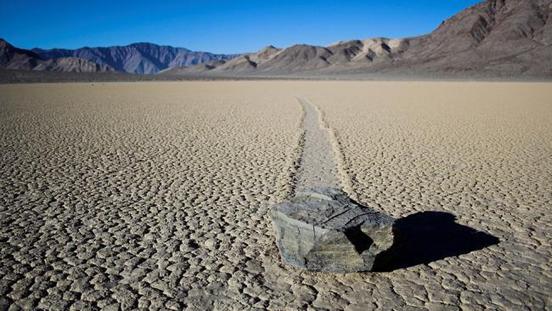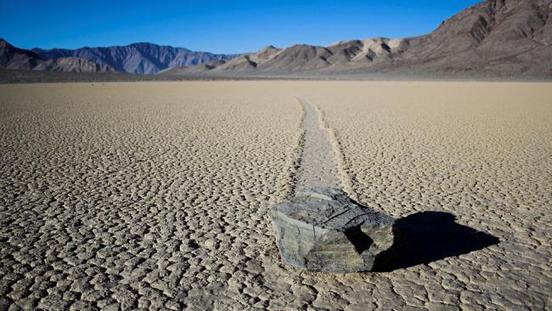There’s a place in Death Valley National Park where a mystery that has puzzled scientists and park visitors for decades finally has been solved.
Source: www.weather.com
The video in this article (weather.com) nicely explains how the non-aerodynamic rocks of Death Valley’s Racetrack Playa move, leaving behind their trail in the hot desert. Numerous attempts using GPS receivers (NatGeo.com) and good ol’ fashioned observations have been made, but observing ice in Death Valley is so rare that no one had ever seen it until now (phys.org). On very rare occasions, when it rains in the region, water will accumulate in the playa (discovermagazine.com). If the wind is powerful and consistent enough, the wind will push the panels of ice against these rocks and over time, the ice floes will push these rocks, leaving behind distinctive trails (latimes.com). This perfect combination of water, wind, ice and heat creates a remarkable signature on the landscape (livescience.com).
Tags: physical, geomorphology, landforms, desert, erosion, weather and climate, landscape.





Leave a comment